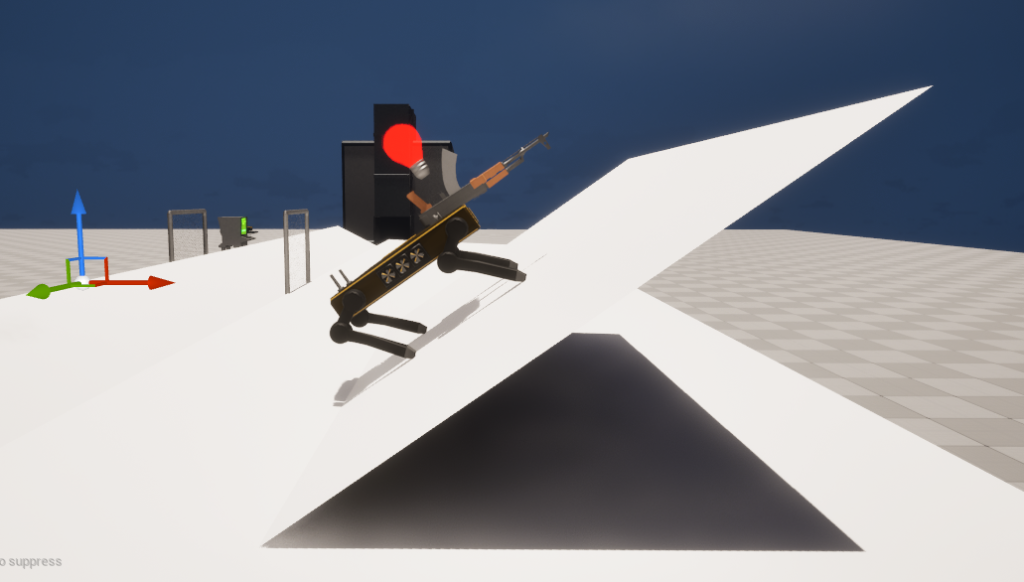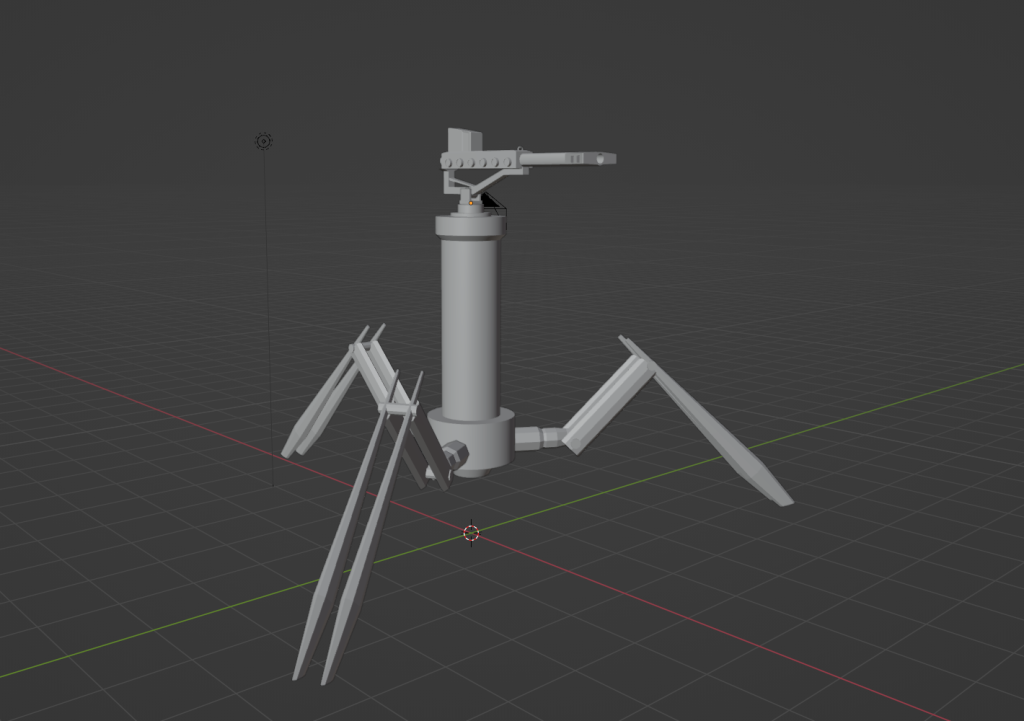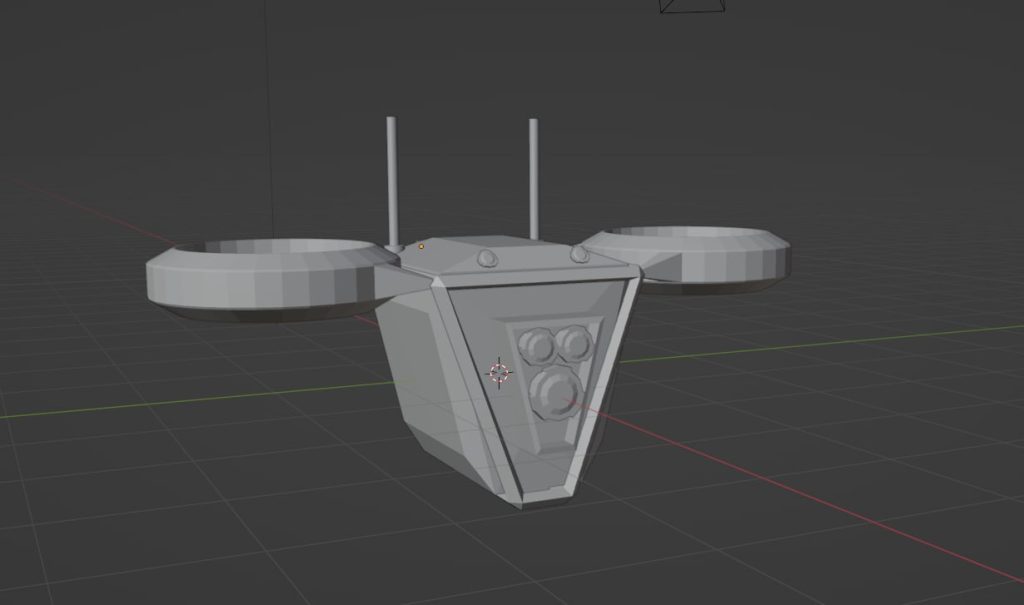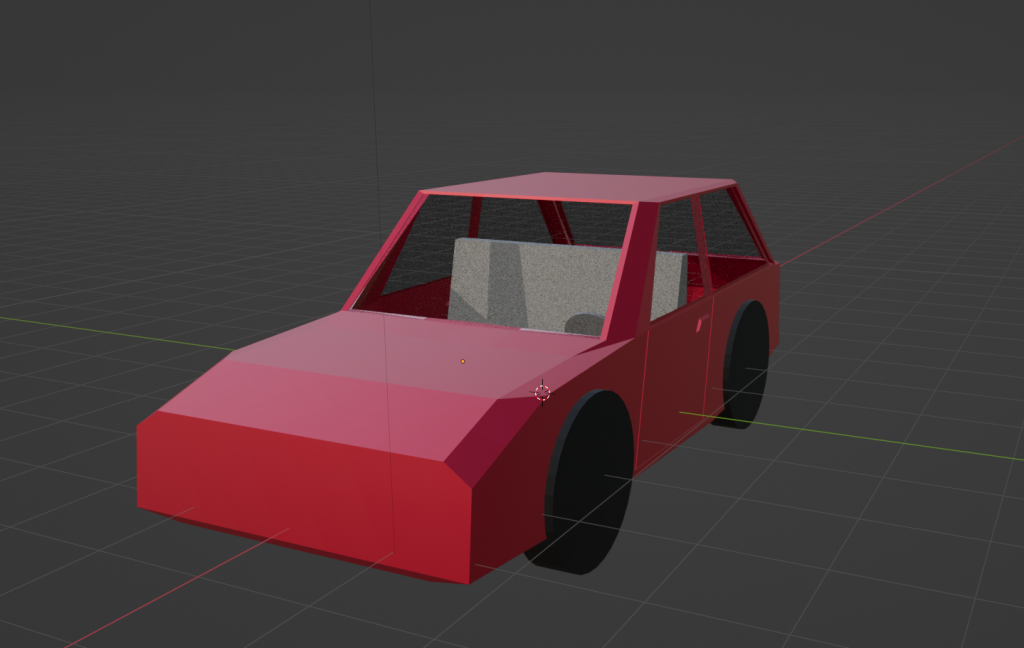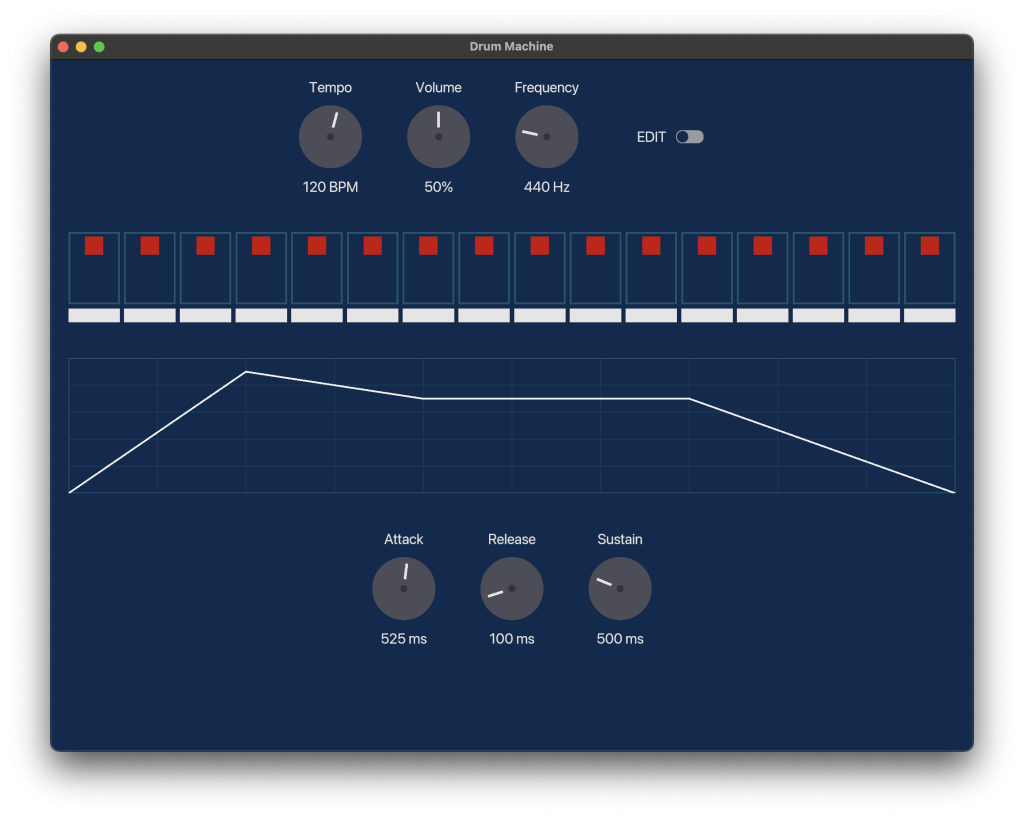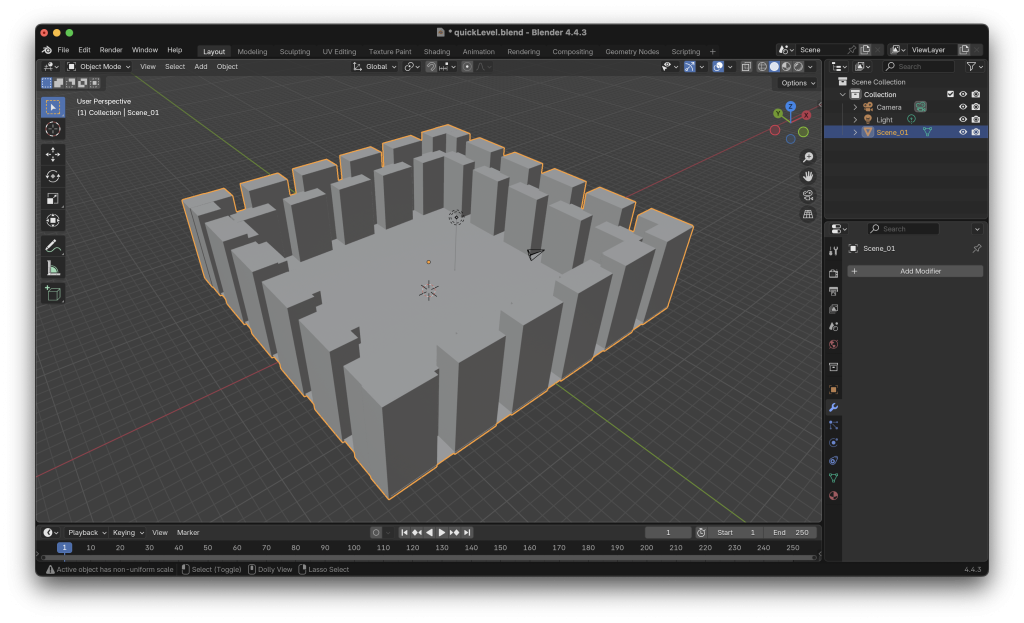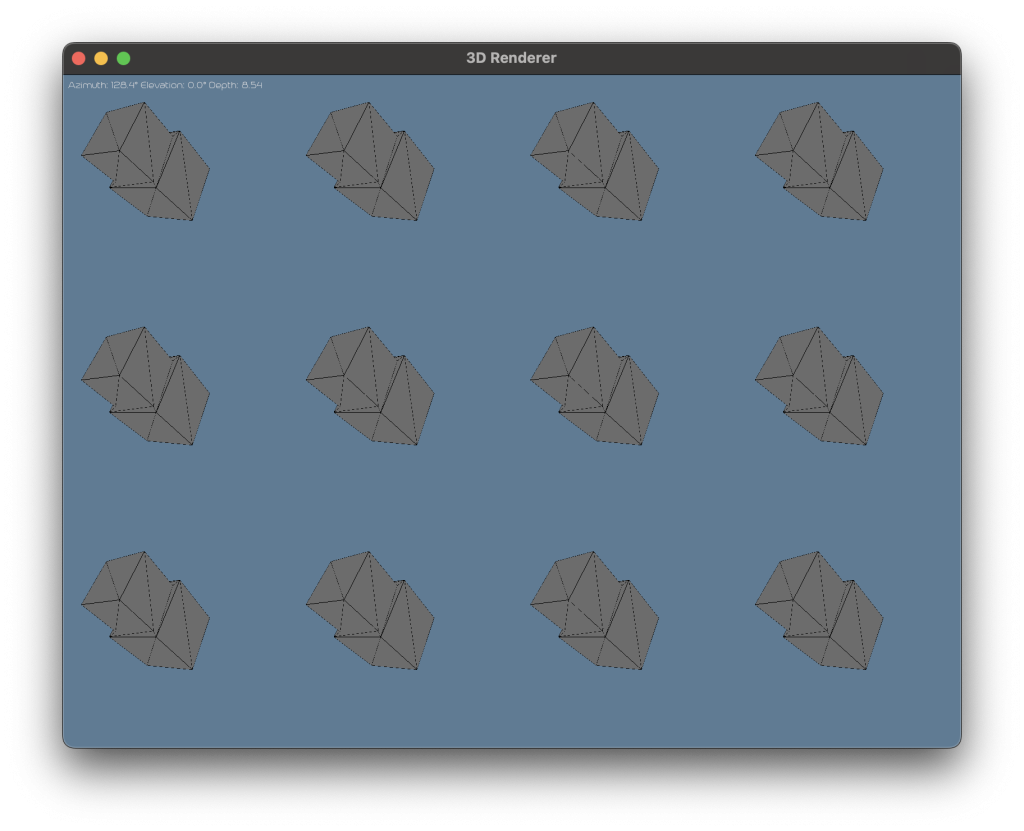I spent WAY to long getting leg ground detection working for the patrol bots: It still isn’t that great but it’s probably as good as I wanted it to be. The big thing is that I can put the bots on ramps and they look kinda right: The basic idea too complicated: essentially you draw […]
Metal Mantis
I’m constantly pondering what to do about the “boss room” for the game. Honestly I’ve been stumped on how to make it fun. In the meantime I’ve done a bunch of smaller things on the game such as: Another map I tried my hand at making a much much bigger map: The thought was that […]
Drone on
Made a drone in blender, going to try to get it in game at some point. The body still looks a bit too much like a cube so I’ll probably take another crack at adding details.
Car?
Getting the technique down to make a car. Gotta spend a few more hours on it, probably need to redo the topology also because: Breaking things down into quads always makes editing a bit cleaner, also the tires need work to be less just barrels. But really half of the battle here is the same […]
Enis sremmurd (Sine drummer)
Making moves to make a simple drum machine app: It does not look good…Gotta clean that up, make it a bit more formal looking. I very much dislike the cartoony side of things. Honestly I think the audio side shouldn’t be that difficult, it’s really just a sinewave generator with a parallel array for the […]
More 3D Less render
Started messing around with Bevy (https://bevy.org) which scratches some of the lower level itch I’m looking for but has enough utility things that I can spin up things kinda quick.In this case just made a first person flying camera and loaded in a scene I made in blender, rendered it red and added a light. […]
Renderer part 2
Fixed up the renderer to 1.) Use a perspective view instead of an isometric one (see https://www.bbc.co.uk/bitesize/guides/z6jkw6f/revision/4) 2.) Added in the ability to spawn several renderers with + and – with random delays on their rendering frames. So you can see the renderers are delayed with my mouse movements. Will I do more with this? […]
Getting better at telling AI what to do
I’ve been messing around with Claude code to see how fast I can spin up silly small projects. I also wanted to do a bit more in rust (https://rust-lang.org). The first one is a breakout clone using the egui library (they call libraries “crates” in rust to avoid sounding like python, and because the package […]
New website
I’ve been going crazy with ai coding tools the past week. Mostly I’ve been using GitHub copilot at work but I got sub of Claude code for personal use. My first project was to make a theme for this site, the old 2011 theme was getting kinda stale. I did put a bunch of work […]
Brick by brick
Made a brick wall thats waaayyy to detailed to put in game: I did this after frustration from trying to make a brick wall just from a texture: Which looks much much worse. This was also my first major step into using geometry nodes in blender (see: https://docs.blender.org/manual/en/latest/modeling/geometry_nodes/index.html) which essentially let you make parameterized geometry […]
